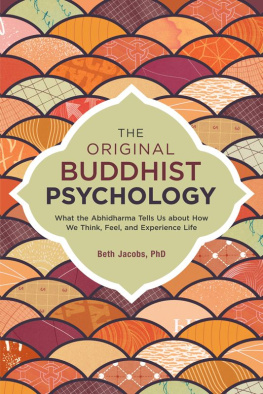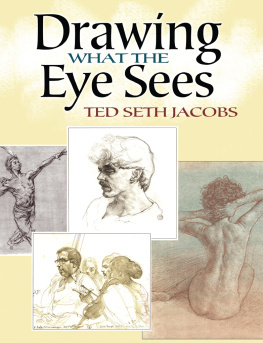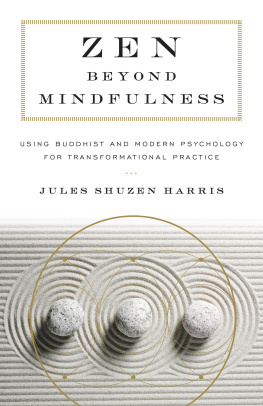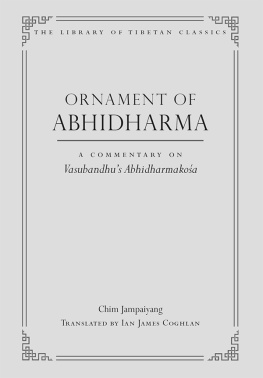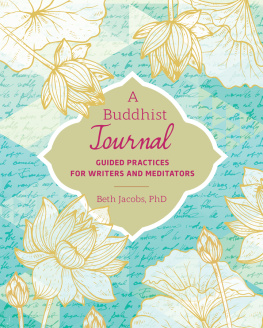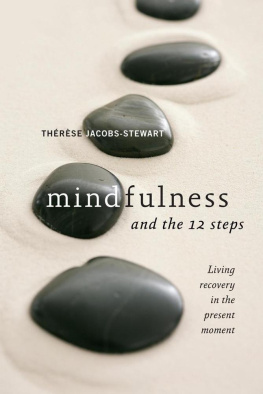TABLE OF CONTENTS
Guide
Pages
The Original Buddhist Psychology
What the Abhidharma Tells Us About How We Think, Feel, and Experience Life
Beth Jacobs, PhD
Copyright
Copyright 2017 by Beth Jacobs. All rights reserved. No portion of this book, except for brief review, may be reproduced, stored in a retrieval system, or transmitted in any form or by any meanselectronic, mechanical, photocopying, recording, or otherwisewithout the written permission of the publisher. For information contact North Atlantic Books.
Published by
North Atlantic Books
Berkeley, California
Cover art and design by Bill Zindel
Interior design by Happenstance Type-O-Rama
Printed in the United States of America
The Original Buddhist Psychology: What the Abhidharma Tells Us About How We Think, Feel, and Experience Life is sponsored and published by the Society for the Study of Native Arts and Sciences (dba North Atlantic Books), an educational nonprofit based in Berkeley, California, that collaborates with partners to develop cross-cultural perspectives, nurture holistic views of art, science, the humanities, and healing, and seed personal and global transformation by publishing work on the relationship of body, spirit, and nature.
North Atlantic Books publications are available through most bookstores. For further information, visit our website at www.northatlanticbooks.com or call 800-733-3000.
Library of Congress Cataloging-in-Publication Data
Names: Jacobs, Beth, 1956- author. | Society for the Study of Native Arts and
Sciences, sponsoring body, issuing body.
Title: The original Buddhist psychology : what the Abhidharma tells us about
how we think, feel, and experience life / Beth Jacobs, Ph.D.
Description: Berkeley, California : North Atlantic Books, 2017. | Includes
bibliographical references.
Identifiers: LCCN 2016053527 | ISBN 9781623171308 (paperback)
Subjects: LCSH: Abhidharma. | BuddhismPsychology. | BISAC: RELIGION /
Buddhism / Theravada. | PHILOSOPHY / Buddhist. | PSYCHOLOGY / Cognitive
Psychology.
Classification: LCC BQ4200 .J33 2017 | DDC 294.3/824dc23
LC record available at https://lccn.loc.gov/2016053527
1 2 3 4 5 6 7 8 9 Sheridan 22 21 20 19 18 17
Printed on recycled paper
North Atlantic Books is committed to the protection of our environment. We partner with FSC-certified printers using soy-based inks and print on recycled paper whenever possible.
Dedication
The whole process must return to the source, *
and so this book is dedicated to Sojun Diane Martin and the sangha of the Udumbara Zen Center.
* Sekito Kisen, The Merging of Difference and Unity.
Acknowledgments
I am deeply grateful to many people who gave so much to me over the years of working on this book. Udumbara Zen Sangha is the jewel of its origination and sustained me during its writing, with Roshi Sojun Diane Martin inspiring the project and Maia Hubbard and Sensei Tricia Teater also standing by through every step. I was given precious time and beautiful spaces to work on this book by the Renaissance House Residency Program, The Hambidge Center for Creative Arts and Sciences, and the Ragdale Residency. The Wesley Writers Workshop, under Sharon and Steve Fiffer, was another great source of support and guidance. Bhikkhu Bodhis edits of the manuscript were invaluable teachings from a true scholar. Althea Orr, Chris Havranek, Erin McNamara, Linda Schneider, Nina Uziel-Miller, Rene Marshel, Sally Turner, Sara Lifson, Seiso Paul Cooper, Susan Filstead, Suzanne Tague, and my brother, Cris Jacobs, supplied boosts just when I needed them. Erin Wiegand and Nina Pick of North Atlantic Books and Teja Watson were gracious and helpful companions during the publishing process.
Finally, Clay, Tara, and Rick, my beloved family, are the ground of my world and my heart. And thanks to Roscoe and Zane, the two cats who sat on my desk while I worked.
Preface
This book is a story, and it contains a lot of information. It is also a story about using information, not for making points but for making sense. Within the course of this book, I am hoping that you will reorient, as I did, from a kind of ownership of information to a placement of yourself within it. The information in this book is about psychology and about Buddhism, but it doesnt presuppose any prior knowledge of these topics beyond an interest in them. Mostly this book is about being a sentient human being and finding the heart of what is true about that and what has always been true about that.
The Abhidharma is a vital part of the Buddhist canon and history, but it has not become part of the popular literature yet. This is because it is too formal, intricate, and internally interwoven for easy explanation, and because it is, deservedly, an area of great reverence for many Buddhist scholars. It doesnt summarize well, and pulling out bits of it unravels its message like a snag in knit fabric. It is extremely difficult to do justice to the brilliance and the complexity of the Abhidharma, and to stay grounded in what is useful and currently meaningful. That is the effort of this presentation: to avoid being cursory or colloquial, yet to plainly bring forward some of the biggest observations possible from the human mind.
I would like to clarify two points at the outset. The first is more minor. I use Pali terms throughout this book, with explanations, because that is the language of the original texts of the Abhidharma to which I refer. There are three exceptions to this, and those are words that have been incorporated into English and are more familiar in a different form: dharma, karma, and nirvana. (This includes the word Abhidharma as an extension of the word dharma.) Those pronunciations derive from Sanskrit. In Pali they would be transliterated as dhamma, kamma, and nibbana.
The other point is about the danger of parallelism, or saying this Buddhist concept equals that Western concept. At times it is clear that the same phenomenon can be viewed from two widely different cultural angles. This is exciting and sheds light on the raw experience itself. But trying to match up conceptsor worse, force one concept into anotherdefies the purpose of understanding experience. In his book, Contexts and Dialogue, which explains how Buddhist concepts relate to the Western understanding of the unconscious, Tao Jiang says the two views are mirrors to each other: My purpose is not to reconcile the differences between them. Instead I use those very differences to expose certain taken-for-granted presuppositions of both.
When Buddhist texts use the word incomparable, they dont mean best but without a basis to begin to evaluate. The Abhidharma is considered an incomparable body of observation. The Original Buddhist Psychology is meant to be an introduction and overview of this vast study. At times I will put the Abhidharma in a psychological context in order to provide an aperture for exploration and to highlight the ways the material can be personally useful.
The Buddhist view and the Western psychological view are like two different people pointing at the moon, and we want to understand the moon more than the fingers. Ultimately every idea has to go through the filter of your own experience. Every description is an effort to share what we have in common beyond words.
Prologue: Why The Buddhists Got it Right

